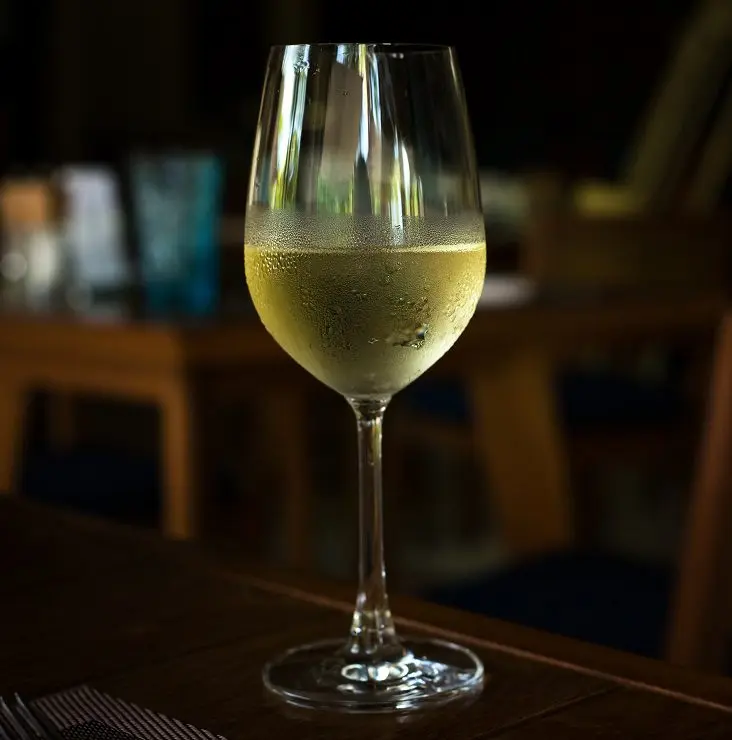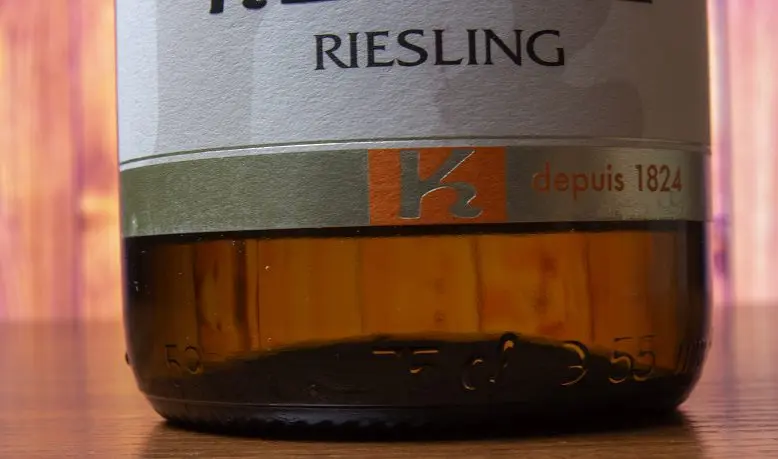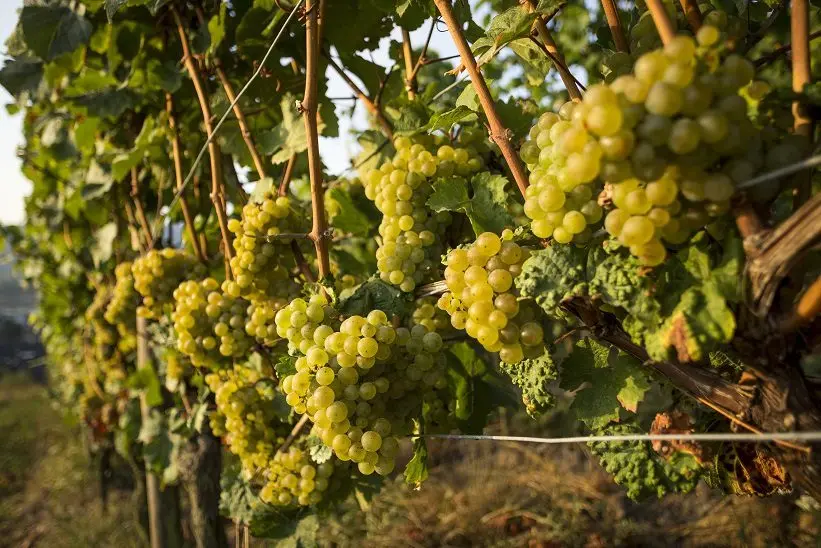Contents
It is traditionally believed that grapes are a southern crop, therefore, the more heat and light the berries receive, the better the wine will be. But the famous Riesling wine is made from grapes for which excessive heat is contraindicated. In the homeland of this drink, in Germany, the weather conditions are quite severe, only frost-resistant unpretentious vines can survive here. Riesling, along with Chardonnay and Sauvignon Blanc, is one of the top three white wines in the world. True connoisseurs appreciate it for its extraordinary freshness: even dessert types have a characteristic sourness and are never cloying.
Features of production technology
Dry Riesling is obtained from barely ripe berries harvested in September-October, dessert – from grapes harvested in November-December. The sweetest wines are made from frozen botrytised (covered with noble mold) berries.
Due to the high acid content, Riesling continues to “ripen” even in the bottle. In order to acquire new, even more noble taste qualities, it needs 10-15 years. The taste and aroma of wine largely depend on the terroir (region) and aging time. Young Riesling smells of geraniums, green apples, pears, peaches, lemon. In a more mature drink, notes of raisins, dried apricots, and burnt bread crust appear. Old wine acquires the aroma of honey, wax, silicon. A well-aged Alsatian Riesling can give off a peculiar smell of kerosene or burnt rubber. This is especially true for wines from areas where the berries ripen too quickly.

How to choose Riesling
All information about the wine is indicated on its label, it is only important to read it correctly. The best German Rieslings are produced in the Mosel, Saar, Ruwer, Rheingau and Palatinate valleys. Rieslings from Lower Austria are also good. The local wines are fragrant with peaches, oranges and lemons.
Wines made in Germany from Riesling grapes can be “table” (with added sugar) and dry. Drinks without sugar (dry) are labeled QmP (Qualitätswein mit Prädikat – top quality wine).
Quality wine is considered to be marked by VDP – the association of owners of the best vineyards. In this case, the label will have one of the inscriptions: Erste Lage (an analogue of the French communes “Appellplace”) or Grosse Lage (an analogue of the French elite vineyards “Grand Cru”).
The best Austrian Rieslings are marked with a green lizard, Alsatian – according to French terminology – “Appellplace” or “Grand Cru”.
Riesling types:
- Kabinett is the driest wine made from slightly unripe grapes;
- Spätlese – wine made from barely ripened berries;
- Auslese – wine made from fully ripened grapes;
- Beerenauslese – wine made from overripe and botrytised grapes;
- Eiswein – wine made from berries picked at -7°C;
- Trockenbeerenauslese is a dessert wine made from botrytised berries.

How to drink Riesling
Experienced sommeliers note the versatility of Riesling: it goes well with all dishes. Serving temperature – 8-12°C. Semi-dry wine can serve as a wonderful aperitif. Dry – goes well with appetizers and hot meat dishes. It is recommended to serve fish and seafood with Austrian Riesling: it is dry, but has a slightly salty taste.
Dry Riesling is in harmony even with spicy oriental dishes: Korean, Japanese, Thai, Chinese, Indian. A very piquant taste is the combination of game (especially duck or woodcock) and semi-sweet Riesling. Dessert wine is suitable for sweets and fruits.
History of German Riesling
Winemakers believe that the Riesling grape variety was bred in the 1435th century during the time of King Louis II, who owned Bavaria and other German lands. However, the history of Germany is a series of continuous wars, when monasteries burned along with chroniclers and chroniclers. The oldest surviving document mentioning the Riesling grape dates back to XNUMX. This is an entry in the household book that the manager of Count Katzelnbogen purchased six vines to plant them in Rüsselheim.

But wine from Riesling was not popular anywhere except in Germany. The fact is that it ripens too late, by November. Wine from berries harvested in September turns out to be too dry, for an amateur. And that’s half the trouble. Riesling, unlike other wines, does not tolerate new oak barrels. Since in the Middle Ages alcohol was transported in just such a container, it is clear that the recipient received not noble dry wine, but a dubious drink with a completely spoiled taste.
The legend says that one day the messenger, who was supposed to bring permission from the bishop to the monastery to harvest grapes, either got lost or went on a spree. He arrived two months later, in November. By that time, the berries were overripe, and some of them were covered with noble mold (Botrytis cinerea). What was the surprise of the monks when it turned out that the wine from the “spoiled” grapes is much sweeter and more aromatic than from the usual one.
But Riesling was finally rehabilitated only at the beginning of the 1716th century, with the end of the Thirty Years’ War, during which the Germans had no time for culinary delights. In XNUMX Abbot Fulda of the Order of Saint Benedict acquired the abandoned vineyards and ruins of Johannisberg Monastery. He was an enterprising man, and therefore the wine from the monastery cellars of Johannisberg is still considered the standard of Riesling.

Within five years, a real boom began in Germany, and by the end of the century, Riesling had become the most popular variety in the country. Vineyards along the banks of the Moselle and its tributaries: the Saar and the Ruvel, are completely planted with vines of this variety only.
In the XNUMXth century, Riesling became extremely popular in Europe. It was valued on a par with the most famous French wines. So, at the end of the XNUMXth century in St. Petersburg, a bottle of Johannisberg Riesling cost twice as much as Chateau Lafitte.
In the XNUMXth century, popularity played a sad joke with Riesling. Many white wines of far from the best quality began to be named after him. And German winemakers, in pursuit of productivity, began to replace genuine Riesling with Müller-Thurgau vines. As a result, many wine lovers have a completely wrong opinion about the taste of Riesling.
But nature put everything in its place. In the 70s and 80s of the 20th century, there were several very cold winters, when most of the Müller-Thurgau vines in the Moselle valley froze to death. The dead plants were replaced with real Riesling, which has been cultivated in these parts for centuries. Today this variety occupies XNUMX% of all German vineyards.
Riesling in other countries
The Moselle Valley has a unique microclimate. There is no heat here, but the sun’s rays, reflected from the surface of the water and basalt rocks, warm the berries from all sides. The slower the grapes ripen, the better wine they make.
In addition to Germany, high-quality grapes of this variety are grown in Austria and Alsace (in the foothills of the Vosges). In the XNUMXth century, settlers from Silesia brought Riesling vines to Australia and New Zealand. Australian Riesling from the Clare Valley has a very peculiar bouquet.
In the USA, this variety is grown in the states of Oregon and Washington. Riesling also took root in South America, in Chile, where it is almost as cool in the foothills of the Andes as in the Moselle valley.









